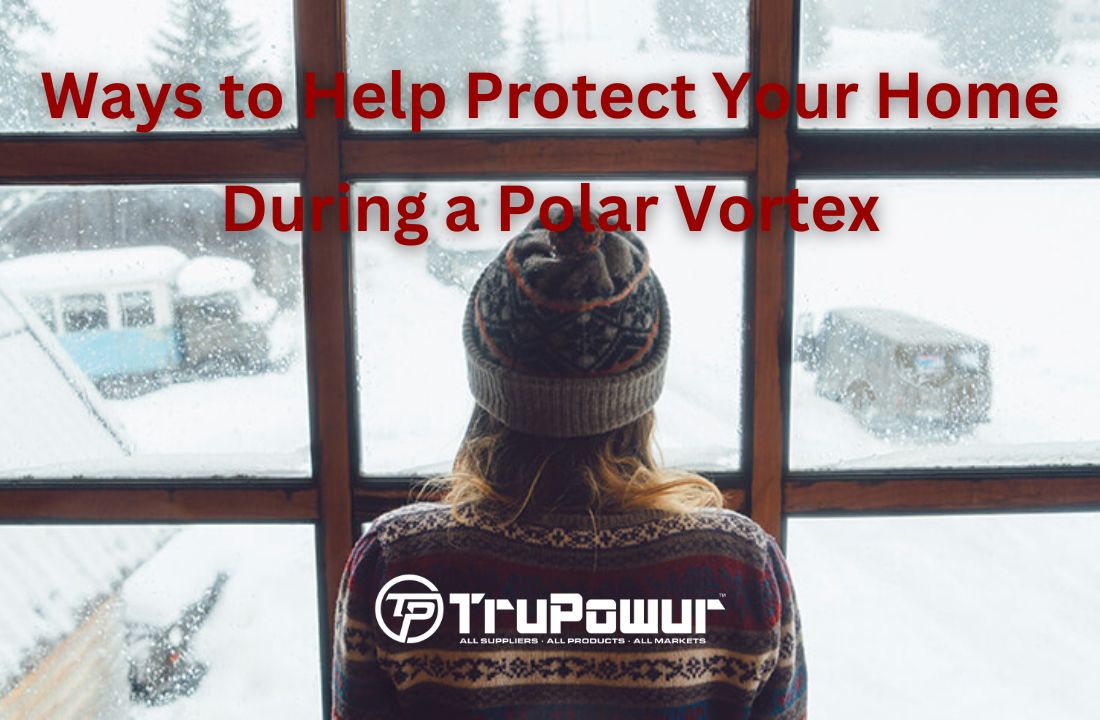When your local meteorologist utters the words ‘polar vortex’, you know you can expect bitterly cold temperatures and even dangerous wind chills. You can also expect that in the coming days, your local plumbing and heating technicians’ phones will be ringing non-stop responding to broken heating systems and frozen pipes.
To help protect your home in the event of a winter-weather emergency, professionals suggest performing preventive home maintenance – such as getting your heating system tuned up annually, conducting a home energy audit, or checking the batteries in your carbon monoxide detectors.
Energy System: The home’s wiring and energy use
Air System: Ducts that push air throughout the home
Water System: The pipes and plumbing that move water throughout the home
Security System: Locks, doors, and alarms that help detect and protect against potential dangers
Following are four ways to help protect your home’s four critical networks during a polar vortex:
1. Energy: When extremely cold weather threatens your area, homes’ HVAC systems are constantly calling for heat, which puts tremendous strain on the electric grid. Winter Storm Uri, the 2021 polar vortex, caused a grid emergency in Texas, which could have been a lot worse if it wasn’t for Demand Response programs across the state.
You can help keep the electricity grid functioning by controlling the demand from enrolled smart thermostats and other distributed energy resources. During extreme cold or hot weather, shifting Megawatts of load from the grid helps stabilize the electric grid for all. If your home’s heating source is electricity, like a heat pump or electric furnace, you can help keep everyone’s heat and lights on by not raising your thermostat’s setpoint temperature and also by participating in utility Demand Response events. It takes the contribution of tens of thousands of homes pitching in to help curtail the demand and ensure communities aren’t left in the dark – or the cold!
Also, ensure that you keep the natural gas meter clear of snow and ice. Icy build-up and accumulated snow can prevent the meter from operating properly by stopping the flow of natural gas. Be mindful to only open exterior doors, such as a garage door, when necessary to conserve energy.
2. Air: Keep your home at one constant temperature during a polar vortex. If you typically follow a heating schedule, consider over-riding the thermostat schedule for the duration of the polar vortex – or participate in emergency energy-saving events called by your local utility. Also, ensure the system’s air filters are clean so it can continue to run optimally.
Did you know that cold air holds less moisture than warm air? That means there is less moisture in the air outside your home. Frost can form on windows if there is air leakage and moist air on the inside is exposed to cold, dry air on the outside. When the air outside your home is cold and dry, consider lowering your whole-home humidification system during the cold snap to help balance the difference.
3. Water: Check areas in your home that are susceptible to frozen pipes, such as those that are on exterior walls. Consider adding a water leak and freeze detector to those areas.
4. Security: Be sure your carbon monoxide (CO) detector is checked and working properly. When you run your home heating systems consistently for hours, the chances of CO poisoning also increase. Each year in the U.S., more than 20,000 Americas visit the emergency room from unintentional CO poisoning, according to the Centers for Disease Control and Prevention.
While you can’t prevent cold weather from hitting, you can take preventative, home-maintenance steps ahead of cold snaps to help thwart off Jack Frost. A professional can help you find a solution that’s right for you and your home.
BONUS: Even in below-freezing weather, solar panels turn sunlight into electricity. That’s because solar panels absorb energy from our sun’s abundant light, not the sun’s heat. In fact, cold climates are actually optimal for solar panel efficiency. So long as sunlight is hitting a solar panel, it will generate electricity. Any diminished output during the winter months will primarily be due to heavy snow and shorter daylight hours. Get a FREE Zero Down, No Obligation, No Payments for a Year Quote to see how much your home could reduce your energy cost.
Get answers to the TOP 10 QUESTIONS about Solar.
Get a Job in Solar helping customers save!

